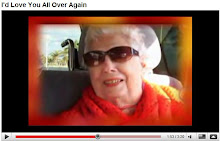Australia’s Outback shame

In national emergencies, soldiers are sent to do all sorts of strange jobs, like shoring up levees against floods or cleaning up towns flattened by hurricanes. But what the Australian Army has been ordered to do must be a world first. Kitted out in camouflage gear, troops are fanning out across the vast Northern Territory to stop gross sexual abuse of Aboriginal children.
"We are dealing with children of the tenderest age who have been exposed to the most terrible abuse from the time of their birth, virtually," said Prime Minister John Howard, as he stomped over the local government's objections. "What matters more: the constitutional niceties or the care and protection of young children?"
Although the Northern Territory occupies a fifth of the Australian continent, it has only one per cent of its people. But it contains more than half of the country's 1,139 remote indigenous communities and nearly 30 per cent of its population is Aboriginal. It ought to be a showcase of how Australia cares for the disadvantaged and vulnerable. It's not.
It is devastating for us to bury our young people; they should be burying us. But the tide has turned: we the Elders are singing and crying for our young ones.
This was our Hurricane Katrina, said Howard – the humiliating exposure of government incompetence and neglect on a vast scale. Social breakdown in isolated Aboriginal communities was so serious that it warranted immediate action. "Freedoms and rights, especially for women and children, are little more than cruel fictions without the rule of law," Mr Howard said. So troops, police, doctors, social workers and bureaucrats are flooding into about 60 townships in an effort to rebuild Aboriginal society from the ground up.
By any yardstick, the measures are Draconian. They include banning the sale, possession and consumption of alcohol in certain areas; restricting access to welfare payments to ensure that parents feed their children instead of their addiction to grog and gambling; and banning the possession of X-rated pornography. Non-Aborigines will no longer need permits to enter certain settlements and the Federal Government will acquire five-year leases over some townships. Disturbingly, for many Aboriginal parents, there will be compulsory examinations for their children to check for sexual abuse and to assess their health.
What sparked the federal government into action was a report commissioned by the local government into Aboriginal child sexual abuse, Little Children are Sacred. It was replete with sickening stories: a three-year old girl imitating sex acts, 12 to 15-year-old Aboriginal girls trading sex with mine workers for alcohol and cash; increasing rates of incest; 15-year-olds raping five-year olds; mothers prostituting their children...
Sad as they were, none of the stories was new. Even though the report offered few hard statistics on the scope of the abuse, it was universally believed. Year after year government reports have been tabled about dysfunctional Aboriginal communities. Successive governments have given them the vote, welfare, land rights and a huge bureaucracy to manage their affairs. What was beyond their power to give was happy home lives and successful marriages.
Aborigines have always been at risk. After more than 200 years of white contact, often tainted by violence, abuse, discrimination and neglect, links to traditional cultures and homelands have frayed or broken. Some have integrated successfully into mainstream Australian society. Many have not. Fringe-dwellers of de-tribalised Aborigines live in the outskirts of many country towns in ramshackle settlements. In more remote areas, so alien from white Australia that residents speak little English, tiny townships subsist on government welfare payments.
In many (though not all) of these, living conditions cannot be described as third world, or even fourth world. Journalists and government reports paint pictures of utterly demoralised communities, horrifying parallel universes of boredom, pornography, ill-health, drunkenness, petrol-sniffing, violence, and sexual abuse. Here are some details:
• One out of eight children is abused or neglected.
• The per capita rate of sexually transmitted infections amongst NT Aboriginal people is between seven and 30 times greater than for non-Aboriginals.
• Drunkenness is endemic. To give an idea of the problem, consider the town of Borroloola – population about 800. The locals were consuming about eight pallets of beer -- 960 cartons -- a day.
• Pornography is everywhere. Many children in Aboriginal communities are hyper-sexualised as a result of watching blue movies on DVDs and pay TV.
• The use of cannabis, kava is widespread. Petrol-sniffing has destroyed the lives of many young men in remote communities.
There are fears that traditional Aboriginal culture will disappear with this generation. A woman elder from the Yolngu people in Arnhem Land said eloquently: "We can see that the young people are coming out of school and going straight into drinking – this is a very bad habit... It is devastating for us to bury our young people; they should be burying us. But the tide has turned: we the Elders are singing and crying for our young ones."
Got the picture? Reading Little Children Are Sacred would make you weep with despair. But not just at the horrifying abuse of women and children and the near-extinction of an ancient culture. There should be despair, too, at the clueless bureaucrats.
The problem with Aboriginal society is not that it is too different from mainstream Western society, but that it is too much the same. Reeling under the onslaught of modern technology, media and bureaucracy, Aboriginal culture is fragile – immune-compromised and vulnerable to degrading moral infections. Our more robust culture, with its long Christian traditions, law and institutions can hardly cope. What chance does Aboriginal culture have? Essentially, how different is the world of Borroloola and the binge-drinking, sex-sodden world of many university students? Just read Tom Wolfe's novel I Am Charlotte Simmons.
In fact, as the report's authors found, the problem was that many Aboriginal girls and boys are just copying what they see on their TV screens. Pentecostal minister Djiniyini Gondarra, of the Galiwin'ku people in Arnhem Land, made a shrewd observation last year: Aboriginal youths believe they are "acting within 'white fella' law when being abusive, a thinking that began with the systemic undermining of our own law with the colonisation of Australia and the atrocities that followed. It is now reinforced by TV, movies, pornography and drugs brought into our community from wider Australia."
What makes outback Aboriginal society so sick? The Howard government has highlighted the destructive influence of welfare payments – or "sit-down money" as it is often called. It is attempting to create a work ethic and a sense of personal responsibility. This will help to curb the drunkenness, idleness and hopelessness which underlie much of the sex abuse.
But a crackpot welfare system is far from the whole story. The report's authors heard from many sources that "as traditional Aboriginal and missionary-imposed norms regarding sex broke down, they were being replaced with rampant promiscuity among teenagers." These tragically vulnerable people, in other words, are living in a moral vacuum.
How do the authors of the report propose to fill it? They offer 97 lukewarm recommendations which will require an army of social workers to implement. But what is their game-plan for changing the hearts of Aboriginal youths, to help them treat others with the respect due to them as fellow human beings?
Safe sex. Yup, that's right. Safe sex. "It is the Inquiry’s view that action must be taken to establish a new set of moral 'norms' within Aboriginal communities that do not fetter the freedom of choice but encourage the young to make appropriate and healthy choices in relation to sex and make certain behaviours socially unacceptable." How about fostering healthy marriages? How about strengthening the family unit? Divorce and separation is far more common amongst Aboriginal people -- sometimes 300 per cent more common in remote areas. Study after study has shown that children are happiest and healthiest in intact families. But none of the report's recommendations touch on the disastrous state of Aboriginal marriage.
Traditional Aboriginal laws on marriage were harsh and patriarchal, but they did not sanction promiscuity or sexual abuse. When Western moral relativism infected traditional culture, it killed the traditions and left little in its place. In one community the Elders' efforts to promote traditional marriage were being undermined by the local health centre which was distributing condoms and telling them they could have sex with anyone they want at any time as long as they wore a condom. "For young people today having sex is like fishing, and they throw that fish back when they finished," a Yolgnu Elder said.
This doesn't inspire much confidence in the ability of bureaucrats from Canberra, the national capital, to teach Aboriginal youths why they shouldn't sleep around and watch X-rated DVDs. Canberra, coincidentally, is also the capital of Australia's mail-order pornography industry.
Because Aborigines are socially and psychologically fragile, they suffer more when moral standards decay. But in a sense the disintegration of their communities should be a warning bell for us about the insanity of regarding substance abuse, pornography and promiscuity as mere lifestyle choices which are acceptable as long as no one gets hurt. The tragic experience in the Northern Territory shows that a morally corrupt lifestyle will eventually lead to a dysfunctional society where kids are at risk. The best the bureaucrats can do then is to surround broken families with a rickety scaffolding of social services and hope the kids will survive.
And if they don't, send in the Army.
















No comments:
Post a Comment